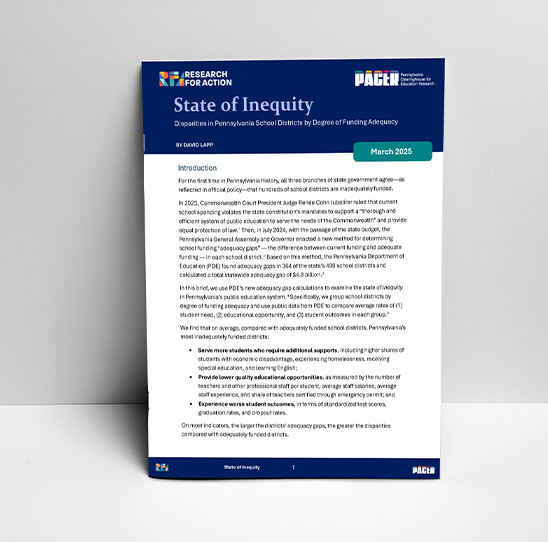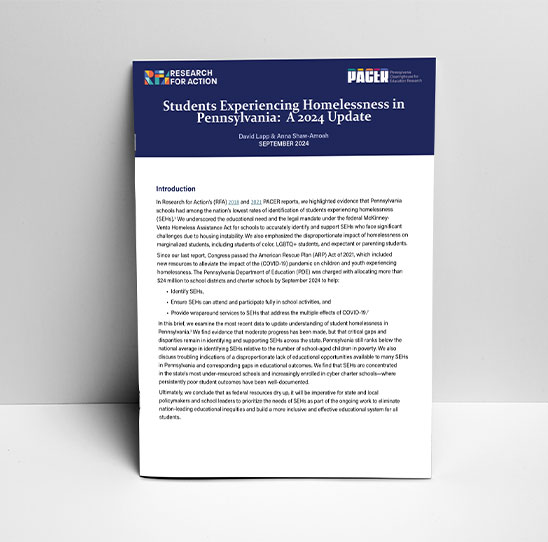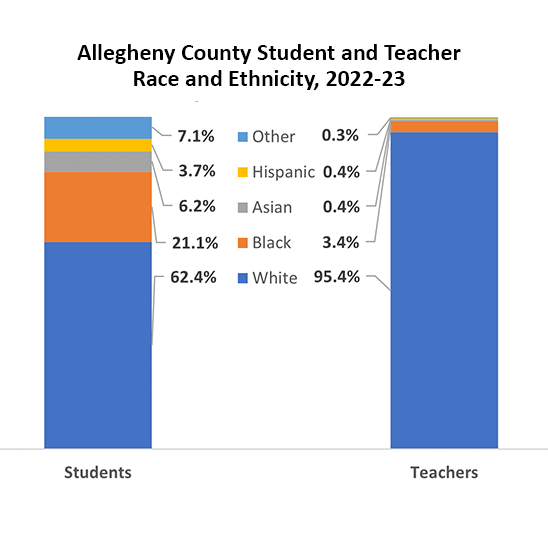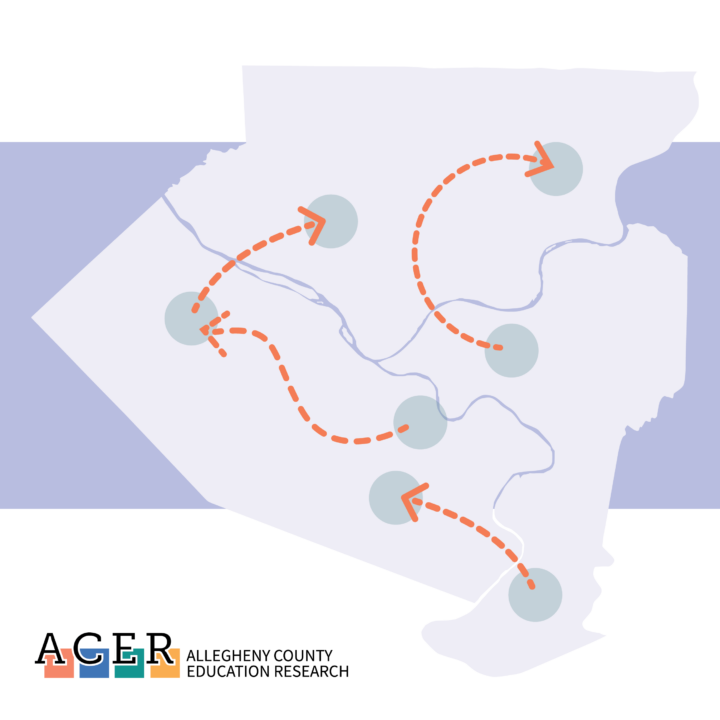This study provides the first descriptive comparison of the characteristics of Pennsylvania school districts by degree of school funding adequacy gaps, as calculated by the Pennsylvania Department of Education in 2024 using the state’s legislatively enacted methodology.
The 499 school districts are combined in five groupings based on the size their adequacy gaps (135 no gap, 91 low-gap districts, 91 moderate gap, 91 high gap, and 91 very high-gap districts). Each grouping is then compared on weighted averages of 16 indicators related to
- Student need (rates of student economic disadvantage, homelessness, special education, high-cost special education, English learners, and charter schools);
- Educational opportunity (rates of teachers and other professional staff per student, staff salaries, teacher experience, and rates of teachers on emergency permits); and
- Student outcomes (math, ELA, and science proficiency rates, graduation rates, and dropout rates).
On virtually every indicator, districts with the most inadequate funding serve students with greater needs, provide less educational opportunity, and experience worse student outcomes than districts with adequate funding. Collectively, these data paint a clear picture of harsh inequity in Pennsylvania’s system of public education. The findings should motivate state policymakers to completely and permanently eliminate school funding adequacy gaps.











